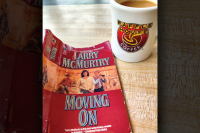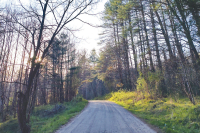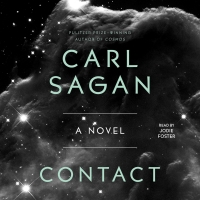The Art of Preservation: Stecoah Valley Center bridges past, present
 Heading down N.C. 28, between Bryson City and Robbinsville, is a flat stretch of highway, unusual to the continuous curves on this mountainous route. It indicates a valley, and just past a quaint diner, is a side road to your left, where a sign with an arrow points you in the right direction. You’re in the creative heart of Graham County. You’re at the Stecoah Valley Cultural Arts Center.
Heading down N.C. 28, between Bryson City and Robbinsville, is a flat stretch of highway, unusual to the continuous curves on this mountainous route. It indicates a valley, and just past a quaint diner, is a side road to your left, where a sign with an arrow points you in the right direction. You’re in the creative heart of Graham County. You’re at the Stecoah Valley Cultural Arts Center.
“We’re not in the middle-of-nowhere, we’re actually the center of everywhere here,” said Beth Fields.
A world of art in your backyard
 Coming into its fourth year, Cullowhee Mountain ARTS has grown into a vast array of workshops, one that seamlessly brings together professional artists from around the country. It is a program aiming to nurture creativity at every skill level, where students and teachers alike are able to flourish in an electric environment.
Coming into its fourth year, Cullowhee Mountain ARTS has grown into a vast array of workshops, one that seamlessly brings together professional artists from around the country. It is a program aiming to nurture creativity at every skill level, where students and teachers alike are able to flourish in an electric environment.
“I love working in a community of artists,” said Norma Hendrix. “I really like pulling all of those dots together, where you create a sense of community with the energy of people working side-by-side.”
Over the hills and far away: Folk School bridges the essence of humanity
 Taking a left off U.S. 64 onto Settawig Road in rural Clay County, the busy commercial thoroughfare transforms into lush farmland. The mountain air gets sweeter, soothing late spring sunshine spilling into the open windows of your vehicle.
Taking a left off U.S. 64 onto Settawig Road in rural Clay County, the busy commercial thoroughfare transforms into lush farmland. The mountain air gets sweeter, soothing late spring sunshine spilling into the open windows of your vehicle.
A few miles down the winding road, you enter the tiny community of Brasstown, with its one gas station and handful of buildings. You take another left and cross a bridge into Cherokee County. And though that bridge may just seemingly provide transport over the waters of Brasstown Creek, one will soon understand that the threshold is more than meets the eye.
State of the Arts — Haywood
 As the crowd found their seats and got settled, all eyes were on Marty Sohovich.
As the crowd found their seats and got settled, all eyes were on Marty Sohovich.
“I really believe 2014 was one of our best years,” he said. “And we’re turning a corner.”
Malcolm’s swan song
 Malcolm graced the waters of Lake Junaluska for only a little while. He will be on its shore for much longer.
Malcolm graced the waters of Lake Junaluska for only a little while. He will be on its shore for much longer.
“I think it’s gorgeous, I think it’s simply gorgeous,” said Diane Nabors, of the sculpture of Malcolm the swan. “I stop and look at it all the time.”
Future for Macon gallery uncertain, help sought
 All is not well at the Uptown Gallery in Franklin.
All is not well at the Uptown Gallery in Franklin.
“It’s pretty bad,” said Sue Weathers. “We’re losing money, and keeping the gallery open is getting pretty hard.”
Co-director of the gallery and a member of the Macon County Art Association, which runs the gallery, Weathers is putting an open call out to the local residents, visitors and greater Western North Carolina that help is needed to ensure the longevity and survival of the 52-year-old nonprofit business.
Native art: Bill Eleazer bronze comes home to Waynesville 30 years later
 Nearly 30 years after Bill Eleazer put the finishing touches on “Chasing Tadpoles,” a multi-piece bronze sculpture of three children playing in a pond, the former Tuscola High School art teacher’s work has come home to Waynesville. The only question is, where in town should it go?
Nearly 30 years after Bill Eleazer put the finishing touches on “Chasing Tadpoles,” a multi-piece bronze sculpture of three children playing in a pond, the former Tuscola High School art teacher’s work has come home to Waynesville. The only question is, where in town should it go?
Must-see in Cullowhee
 From blockbuster Broadway musicals to the obscure art of throat singing to politically-charged documentaries on Iranian oppression, Western Carolina University is filling the stage and screen with an impressive line-up of shows, acts and film screenings over the coming year.
From blockbuster Broadway musicals to the obscure art of throat singing to politically-charged documentaries on Iranian oppression, Western Carolina University is filling the stage and screen with an impressive line-up of shows, acts and film screenings over the coming year.
Entertaining, thought-provoking and cultural enlightening, WCU has three different performance series plus a film series. Act now to get season tickets to any of the series, or clip and save the line-up for upcoming shows you won’t want to miss.
This Must Be the Place
 Well, hello there Western North Carolina.
Well, hello there Western North Carolina.
As the arts and entertainment writer at The Smoky Mountain News, I spend my days wandering between art gallery openings, craft beer releases and front porch pickin’ sessions. Each week, I invite you along on the ride as I bring to life all the creative people, places and things that make Southern Appalachia so unique.
Bringing a world of art into your own backyard
 For Norma Hendrix, it’s all about connecting the dots.
For Norma Hendrix, it’s all about connecting the dots.
“I love working in a community of artists,” she said. “I really like pulling all of those dots together, where you create a sense of community with the energy of people working side-by-side.”













